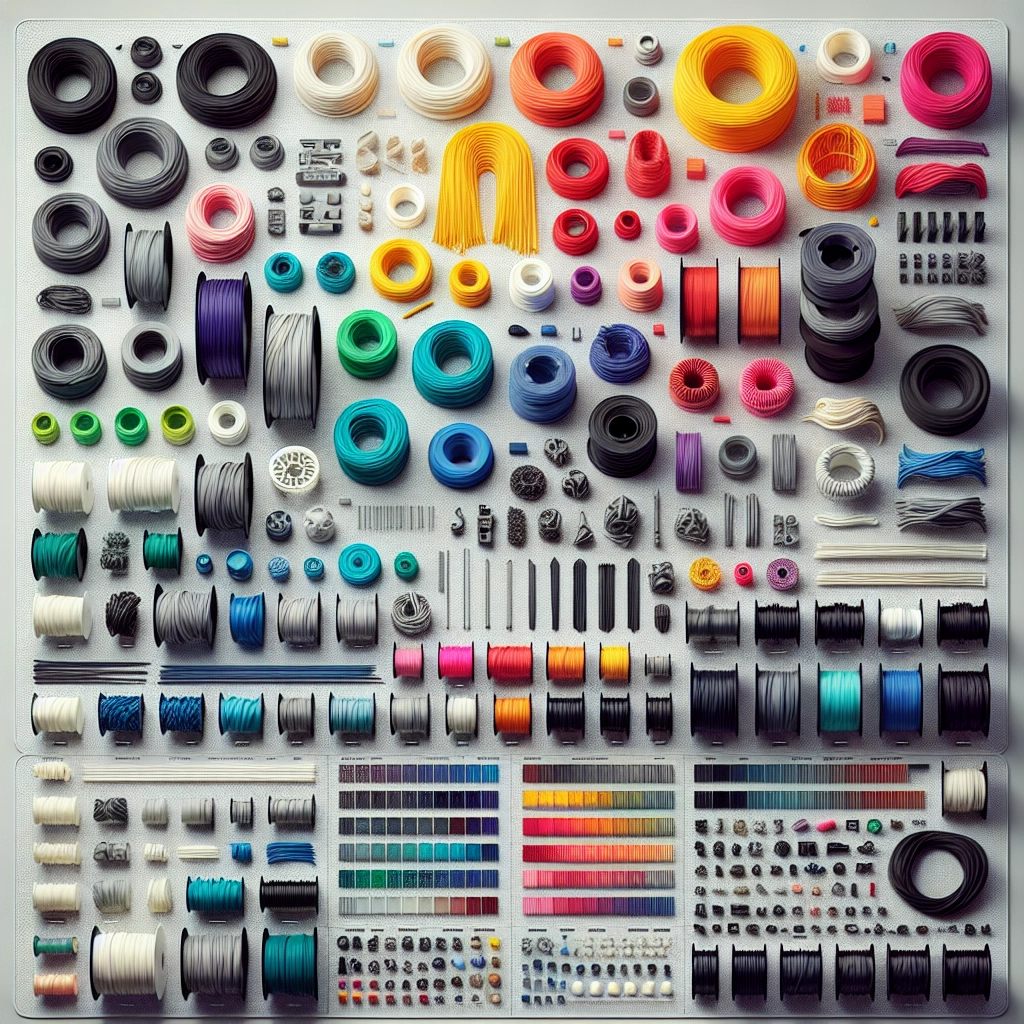Exploring the Market: The Most Popular 3D Filaments
If you’re a 3D printing enthusiast or just dipping your toes into the world of additive manufacturing, you’ve likely stumbled upon a towering jumble of filament options. With acronyms that sound like secret languages—PLA, ABS, PETG—and a seemingly endless array of colors and finishes, it can be a daunting task trying to figure out what you really need for your projects. Don’t fret! Today, we’ll explore the most popular 3D filaments, breaking them down in a way that’s easy to digest, even if you’re new to the 3D printing community.
PLA: The Go-To Choice
Let’s kick things off with PLA (Polylactic Acid). This filament is like the friendly neighbor of 3D printing—non-toxic, biodegradable, and available in a rainbow of colors. PLA is derived from renewable resources like corn starch, which makes it an eco-friendly option.
One of the main reasons why PLA is such a crowd-pleaser is its ease of use. It prints at a low temperature (typically around 180-220°C), sticks well to the print bed, and doesn’t warp easily. This means that even beginners can achieve great results without much hassle. It’s perfect for a wide variety of projects, from intricate sculptures to prototypes and everything in between.
However, PLA does have its downsides. It’s not the best choice for items that need to withstand high temperatures or heavy impact. Think of it like a cookie: yummy, but crumbles under too much pressure. If you’re creating items that will be exposed to higher temperatures or need to endure a bit of rough handling, you might want to consider stepping up your filament game.
ABS: The Tough Player
Next up is ABS (Acrylonitrile Butadiene Styrene), the favorite of many makers who need that extra durability. If you’ve ever cracked open a LEGO set, you’ve encountered ABS—it’s the same material used in those colorful bricks! Known for its strength and resilience, ABS can hold up against heat and impact much better than PLA.
The printing temperature for ABS is typically 210-250°C, which means you’ll need a printer that can handle that heat. It’s also important to have a heated print bed to minimize warping, which is something ABS is notorious for. With a bit of practice and the right settings, you can create amazing and sturdy prints.
One of the quirks about ABS is its smell; it can be somewhat unpleasant while printing, akin to burnt plastic. Good ventilation is a must! If you’re working on an indoor project, be mindful of this aspect and ensure you’re in a well-ventilated area, or consider investing in an enclosure for your printer.
PETG: The Best of Both Worlds
Now let’s talk about PETG (Polyethylene Terephthalate Glycol). This filament is like the hybrid of the 3D printing world—combining the best features of both PLA and ABS while ditching some of the negatives. PETG is incredibly strong, resistant to impacts, and boasts good heat resistance. Plus, it’s relatively easy to print with, making it a favorable option for many users.
Printing temperatures for PETG usually range from 220-250°C, and like ABS, it often requires a heated bed. One of its best traits? PETG has a lower tendency to warp compared to ABS, so you can happily print without having to babysit your project as much. Plus, it has a slight glossiness that can give your prints a beautiful finish.
On the flip side, PETG can be stringy. You might notice some unwanted strands connecting different parts of your print, which can be frustrating. However, fine-tuning your printer settings can usually help with this issue.
A Quick Comparison
- PLA: Easy to print, eco-friendly, low strength and heat resistance.
- ABS: Durable and impact-resistant, tricky to print due to warping and fumes.
- PETG: Strong and easy to print, but can be stringy.
No matter which filament you choose, each has its unique qualities tailored for different projects. Whether you’re designing a delicate vase, crafting a functional replacement part, or simply printing fun toys, understanding your materials is key to a successful result.
And remember, the joy of 3D printing lies in experimentation. Don’t be afraid to dive in, make a few mistakes, and find out which filament works best for you. After all, as the adage goes, practice makes perfect! So grab your printer and start creating!

